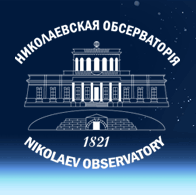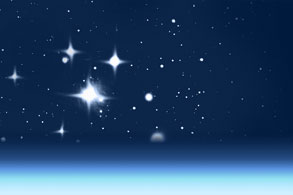| Repsold Meridian Circle |
|
2012-01-20 12:02:48
Meridian Circle is an astronomical instrument the constraction of which consists of a telescope that rotates only in the plane of the celestial meridian about a horizontal axis based on a special support. It is used for accurate determination of right ascension and declination of celestial bodies by recording the moments of star passing through the celestial meridian and measuring the meridian zenith distances. Design and technical characteristics of the instrument Lens diameter D = 150 mm, focal length F = 2150mm. Two limbs (A and B) are tightly planted on the horizontal axis diameter D = 1200mm, which rotates with the pipe. The pavilion was built in 1955 specially for the instrument. Width is of 11m, length is of 7.3m and height is of 4.4 m. The roof of the pavilion is gable and sliding.The shutter opening size when it is open is of 2.5m in the meridian plane for observation. The foundation under the MC, have a look of truncated pyramid of red brick, lies at the depth of 1.5 m below ground level. The monolithic granite columns with fixed metal plates are installed on them. These plates are attached by lagers pins of horizontal axis of the telescope, located in the first vertical plane. The distance between the working sections of pins is of 105.9cm. Columns of red brick for collimator and lens are installed at the distance of 2m to the north and south of the MC. Initially, the moment of stars passage through the meridian was made by self-recording ocular micrometer on a paper tape printing chronograph. The moment of starpassing was determined from 10 pairs of contacts at the 4-speed screw of ocular micrometer. A position of the star in the field of view at a height was determined by two readings of the micrometer screw in declination. As a reference clock the free pendulum stellar clock by British firm Short#35 was used, the corrections were regulary determined by Nikolaev Time Service. The history of the instrument Repsold Meridian Circle (RMC) was ordered in 1834 for Pulkovo Observatory by its director Vasily Yakovlevich Struve, in the Repsold firm (Germany,Hamburg). Regular observations of stars by the differential method began in 1840 and successfully operated for 100 years. During the Great Patriotic War, the instrument was kept in the basement of the USSR, and was badly damaged. In 1955 it was brought to Nikolaev Observatory. Master I.I. Ponomarenko restored the telescope and researched limbs. After that it was installed in a specially built pavilion. In 1955-1956 years, the study of limbs showed that on A limb in some places lines of measuring reference was faded. It was decided not to use a limb and take off measurements only from B limb. In 1964, four photographic microscope for counting limbs were installed, which significantly accelerate the process of stars observations. Cameras of these microscopes contained photographic film of 150 cm, which was enough for 125 stars observations. In 1970th, the construction of semi-automatic device for measuring limb's image was improved, which greatly increased the accuracy, mean square error of one image measurement was equal to 0 ˝ .07 (A.D. Pogonij) In 1977-79 years, the work on the separation of limbs by 2' in the laboratory of angular high-precision measurements of the NAO was carried out (led by N.A. Ilkiv) In 1980, the two-axis photoelectric ocular micrometer was set up (V.V. Konin, A.D. Pogonij), photographic microscopes of the limb were improved (A.V. Shulga) 1990 - replacement of the photographic micrometers of microscopes to CCD cameras 2002 – the end of observations on RMC and transfer of the instrument to the museum of NAO. Scientific programs and results. For more then 40 years of exploitation in NAO, nine different star position catalogs were obtained using RMC. In 1956 - 1966 years. - observations of 9994 stars on the international program AGK3R declination zone from -5 ° to +25 °, 2605 stars of CSC program in zone from -5 ° to -20 ° and 125 stars near extragalactic nebulae. Observers: Ya. Gordon, G. Petrov, A. Kharin, I. Dzuba, O. Garmash, R. Tkachev, G. Gorel, L. Grabar. The results of observations on the program AGK3R was published in the Proceedings of Main Astronomical Observatory, USSR Academy of Sciences (1966). In 1969, L. Gorel (Grabar) published the catalog of positions of 2600 stars CSC in the zone of declinations between -5 ° and -20 ° and a catalog of 117 stars around the extragalactic nebulae. In 1964-1966 years – the observations on SRS (South Reference Stars) and BS (Bright Stars)international programs . Observers: G. Gorel, V. Konin and E. Khrutskaya. The results are presented in the form of catalogs of positions of 5976 SRS stars and 727 BS stars. In 1969-1972 years - observations of stars in the ecliptic zone (3539 stars of Robertson zodiacal catalog, including 313 stars fainter than 8.5m; all stars from FCSC list and stars brighter then 8m from CSC list in zone of ± 15 ° from the ecliptic). Observers: Ya. Gordon, L. Gorel and E. Khrutskaya. In 1974 - 1976 years – the observations of right ascensions of 586 stars of FCSC program in declination zone from -20 ° to +90 °. There were obtained 2525 stars observations of FCSC and 5227 stars observations FK4. Observers: Ya. Gordon, L. Gorel and E. Khrutskaya. In 1984 - 1986 years - observations of 1575 stars with high brightness (HLS) and 1314 stars from the Equatorial Zone of Kortatstsi catalog. Observers: L. Gorel and A. Shulga. |

Íàóêîâî-äîñë³äíèé ³íñòèòóò
Ìèêîëà¿âñüêà àñòðîíîì³÷íà îáñåðâàòîð³ÿ
̳í³ñòåðñòâî îñâ³òè ³ íàóêè
Ìèêîëà¿âñüêà àñòðîíîì³÷íà îáñåðâàòîð³ÿ
̳í³ñòåðñòâî îñâ³òè ³ íàóêè

 |
 |
 |